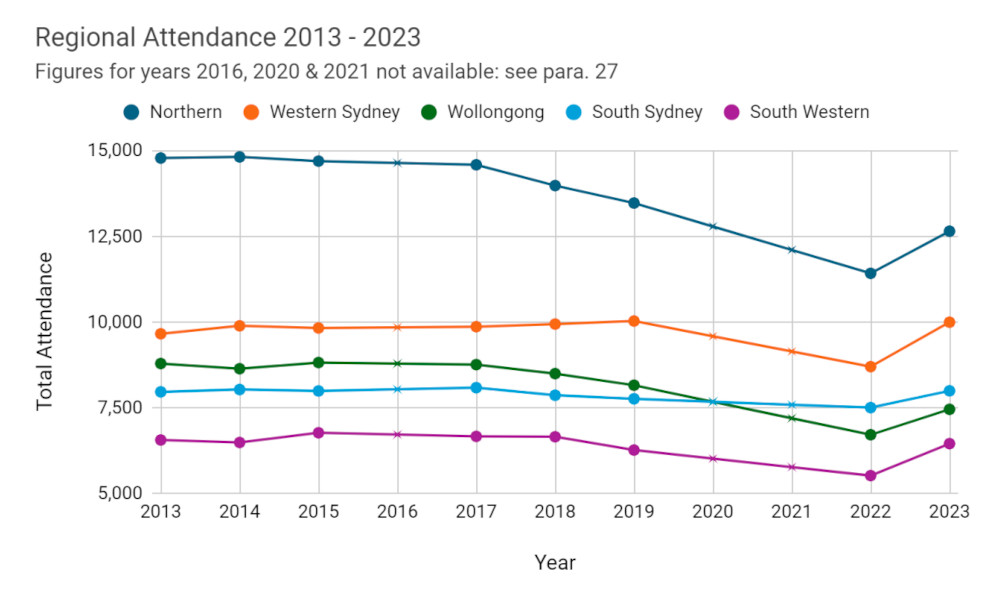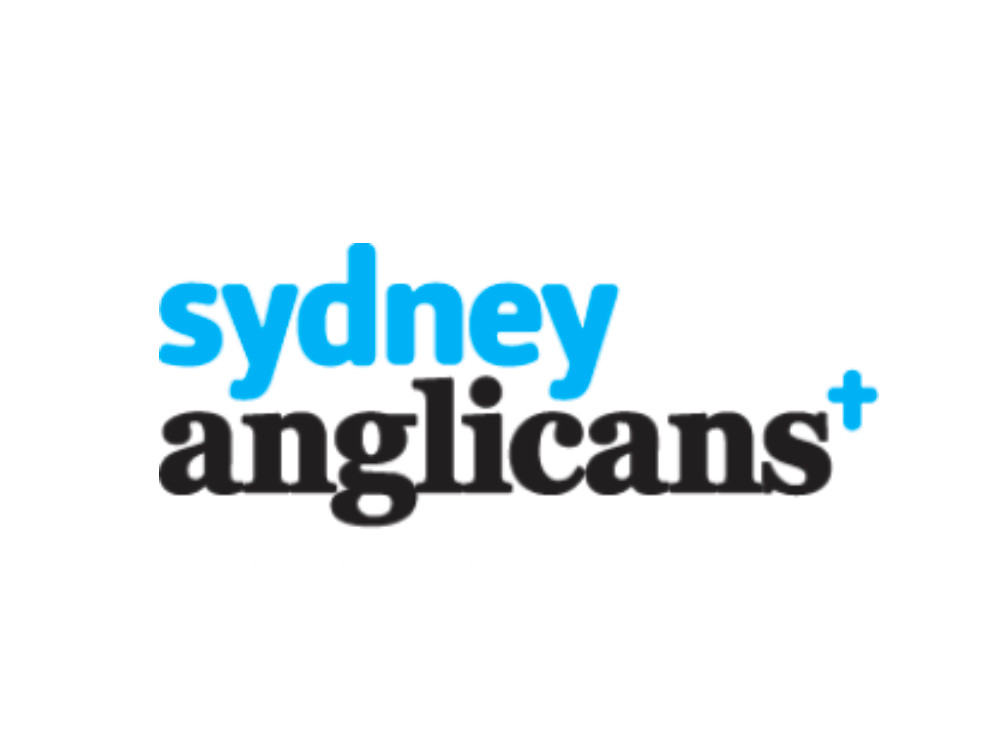An uneven spread of church decline (and some small rises) is revealed in the detailed stats in a report set to be debated at the Sydney Anglican Synod (church parliament) in September. The report reveals a pattern of decreases in traditional church-going regions – a pattern that might show up for other regions and denominations. “Attendance changes have not been uniform across the five diocesan regions,” the Attendance Patterns and Mission in the Diocese report notes. “The biggest declines in attendance have been in the Northern (-2,134, or -14.4%) and Wollongong (-1,336, or -15.2%) regions. There has been a slight decline in the South Western Region (-107, or -1.6%). The Western Sydney (+338, or +3.5%) and South Sydney (+30, or +0.4%) regions grew slightly.”
Northern Sydney, with many larger churches, and the Wollongong region, which includes the Sutherland Shire, would be regarded as the heartland regions of the evangelical diocese—solidly settled suburbs. Sutherland Shire and the North Shore are traditionally conservative areas.
The Other Cheek reported an overview of the report here: New report shows Sydney Anglican’s numbers fall: but also a rebound.
The lessons from this report will extend beyond Sydney and won’t be confined to the Anglican denomination.

The light blue line for the South Sydney region, is the flattest, while the steepest in dark blue is for the Northern region.
“When adjusted for population change, the figures for Wollongong (-22%), Northern (-20%) and South Western (-12%) regions are even more stark. In the Western Sydney (-9%) and South Sydney (-3%) regions, while raw numbers went up, the percentage of the total adult population in our churches went down.”
The South Sydney region contains the socially progressive Inner West and Eastern Suburbs, and the Western and southwestern regions are the areas of Sydney with the greatest concentration of children and population growth in the Hills and Macarthur regions, respectively.
So why did the trendy inner suburbs do better than the settled – and in the case of the north side – wealthy zones?
One minister who has closely studied the stats told The Other Cheek that in the Inner West and the East, the churches have come to deal with the fact that Christianity is unpopular in the community and have learned how to deal with that. The “heartland” regions may have been insulated from that unpopularity for longer and shielded by having large churches.
Comparing the results for each region of the Sydney diocese shows that church growth or decline is not aligned with wealth. Sydney residents may be familiar with the “Red Rooster line” that uses the prevalence of outlets for fast food providers to split Sydney into a more advantaged East and North and a less wealthy West and South. The region-by-region church growth/decline results appear to ignore the Red Rooster line that separates Sydney.
Covid and the last four years
The disparities between these regions played out during Covid and after. “The regional breakdown from the last four years shows again that the Wollongong Region and the Northern Region declined more rapidly. Attendance in the South Sydney and South Western regions has risen slightly, meaning there are now more adults attending Anglican churches in the South Sydney Region than in the Wollongong Region.”

Against the odds, the part of Sydney that has been most antagonistic to the evangelical Christianity of the Sydney Diocese, the Inner West and Eastern Suburbs, has done comparatively well for the South Sydney region without the same degree of population growth as Western Sydney and the south-west.
The explanation offered earlier that the churches in this region have learned to cope with a community that no longer regards Christianity with favour, deserves more exploration.


Could it be that hipster churches such as Vine, Grace City, Anchor and some high profile churches in the ES like draw people of their particular target demographic from out of area?
I am sure that happens but the trend occurs over a much wider area as well
Hi Bud, I’ve been at two of those newer churches you have mentioned and I don’t think that’s happening more than any other church – no big out of area component at all. To be honest I’d say that those two newer churches were more organised, better at welcoming newcomers and partnering with members in mission than the other three churches I had attended in the North and West of Sydney. It’s been very encouraging to be in a church where local people are regularly becoming Christians.